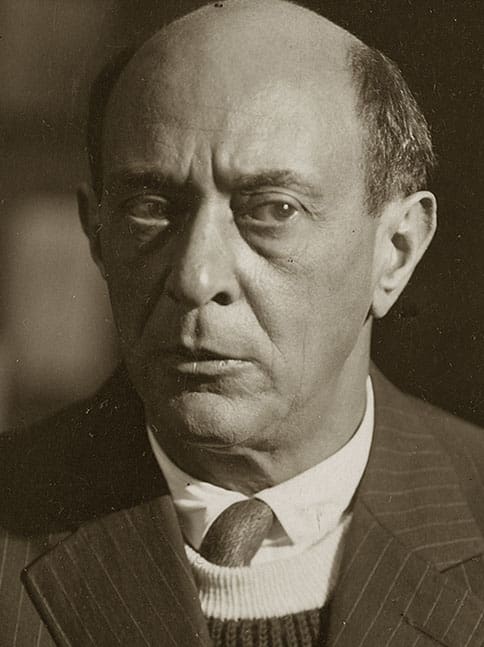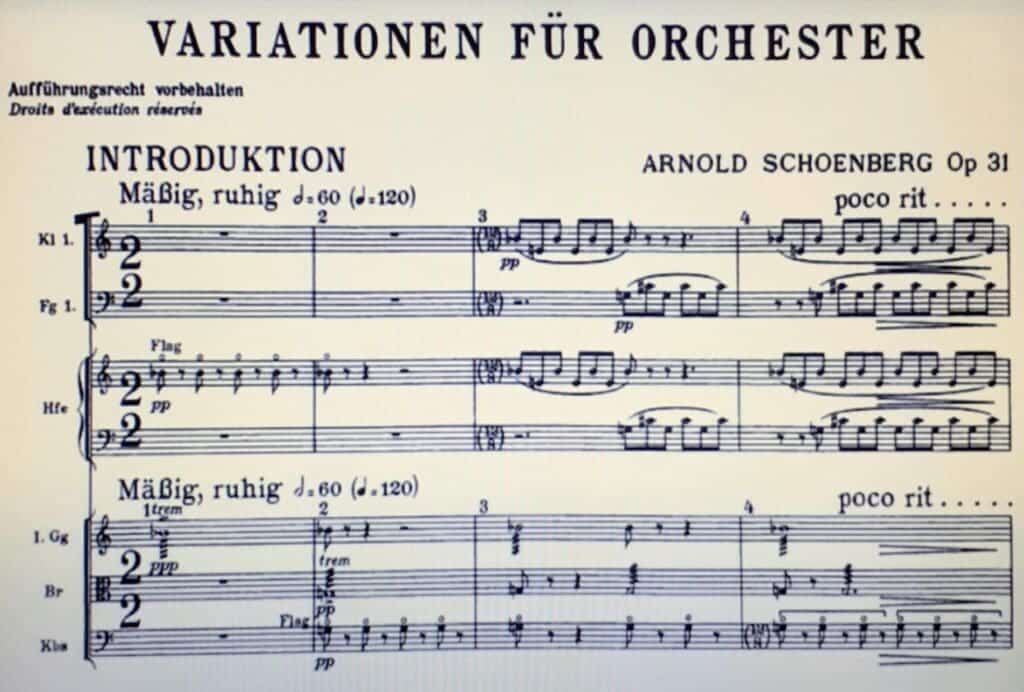
Thus, this is not meant to be an article critical of him but rather a discussion in which Schönberg represents not a musician but the forerunner of a way of conceiving music in sharp contrast to earlier composers.
Paris hosted three grand universal expositions in 1878, 1889, and 1900 (to mention only our interest years). In addition to allowing visitors from all over the world to be welcomed, these have made it possible to “import” many foreign and quite distant elements from European culture.
Persian, Asian, and American musical cultures especially made their triumphant entry into a Europe dominated by Romanticism, with the absolute dominance of the piano and its sounds.
Music, until then, almost wholly confined to specific territories, became “globalized” and was, therefore, a candidate for appreciation by a new audience, perhaps a bit conservative but still open to new experiences. As evidence, one only needs to consider the Sino-Japanese influence on furnishings and decorative objects.
What was taking place was a veritable muted revolution, whose guerrillas were the same Europeans who, without blowback, were beginning to observe exotics with an increasingly less critical and increasingly interested eye.
The African American culture that, in the cotton fields of Alabama or Mississippi and, above all, in New Orleans, Lousiana, had given birth to the blues, and the jazz began to spread like wildfire in an area where tonal music was firmly anchored in diatonic scales and, only timidly, for example, with Debussy, began to explore the potential of hexatonic scales and colors typical of distant cultures. Without much ado, we can say that they liked this new, less formal music very much.
On the other hand, European music had also “colonized” America and found fertile ground, thanks to extensive subsidies from impresarios. But in that sense, Americans harbored an unsurpassed pride while intensely appreciating European classical and romantic works. In particular, jazz, the child of a culture forged by abuse and segregation, sought revenge that did not distort original ideas but elevated them as Europeans had done with Bach, Mozart, Haydn, Beethoven, Chopin, Schubert, etc.
The existence of two opposing tensions: the first centripetal, on the part of “pure” jazz musicians, and the second centrifugal, on the part of fruitions alien to that culture, soon resulted in a dual outcome. Jazz slowly conquered the most coveted stages (first and foremost, Carnegie Hall). At the same time, Europe began to demand more and more new, less “canonical,” and, ultimately, more straightforward music to enjoy (this does not imply that, for example, jazz harmony is simple. Indeed, it is incredibly complicated, but the final results and sounds do not “strain” the ear as much as was commonly demanded by European composers).
You probably wonder why I brought up Schönberg, who worked diligently as a learned composer. The answer (at least, for what I think and argue) is that he, unaware of a revolution, decided to take the painful path of change, perhaps hoping to better represent his time through music. It must be said that his considerations, expressed, for example, in his letters to his friend Kandinsky, are legitimate, and no one could argue that his efforts were vague.
On the contrary, Schoenberg knew perfectly well that what he wished to pursue was logically grounded. Still, what he overlooked (or perhaps underestimated) was that, while atonality and all considerations of the revaluation of dissonances fed a piece of increasingly intellectualistic music, the public had by then accustomed its ears to a very different way of making music. Absolute music was to be more suitable for entertainment and less and less pretentious, and songs, the uncontested queens of twentieth-century stages, for their part, were to overcome the timbral static nature of opera and concentrate a variety of meanings and chromatic nuances in a small space.
Little (in my opinion) was worth the efforts to reevaluate the Lieder by great composers (e.g., Mahler and Schönberg himself) when overseas, the most timbrically disparate voices elicited new emotions. Therefore, I think works like the Pierrot Luinaire, rather than revolutionary, appeared utterly inadequate. The demand for composers had become even more significant than that of the Romantics and Classics. If the latter respected the tonal culture to which the public was accustomed, Schoenberg’s school began to demand an increasing intellectualism.
Listening to Schönberg’s Pierrot Lunaire with the same ear as listening to Shostakovich or Gershwin was impossible. And if Stravinsky went through countless vicissitudes because of his neo-classicism, he at least could not be accused of wanting to demand what the audience did not wish to grant at all. In my opinion, the heart of the matter is hidden in this very point: all atonal, serial, random experimentation, etc., that followed started from the assumption that music could and should follow the same path as, for example, painting.

The issue is very subtle, and I promise to explore it in future articles, but what can be said is that music is not painting. In the banality of this statement lies the most incontrovertible truth. Suppose figurative art has the primary purpose of decorating (also expressing countless meanings, but always only after fulfilling its primary function). In that case, music is more difficult to convince when the sound impact can no longer arouse anything.
The pretense of expressing ideological meanings and concepts using only absolute music (without lyrics) is doomed to continual failure. Experimental compositions based on synthesizers and other purpose-built contraptions showed no revolutionary insights. While Stockhausen was doing this, hundreds of musicians, pop, rock, etc., used the same (or similar, such as electric guitar with filter chains) instruments to produce music that ignited spirits.
I don’t mean to sound irreverent or trite. Still, while Beethoven was igniting audiences in the early 1800s with the straightforward opening of the Fifth Symphony, a century and a half later, Deep Purple was sending a stadium into a frenzy with the equally simple opening notes of Smoke on the Water!
To deny it makes little sense, and to try to find shelter in the search for an elite who goes into ecstasy while listening to a Berio sequence or a Sciarrino composition is to have openly declared that the battle has been lost.
Music must pursue the idea of wholeness, and it cannot do so if it fails to comprehend the needs and wants of the wider audience. Of course, this does not detract from the fact that individual composers are free to express themselves as they wish, eliminating tonality, using matrices and other mathematical methods, or, like John Cage, using I Ching to receive “suggestions from the transcendent world.” The trouble, however, remains, and if these compositions slip inexorably into oblivion (while, for example, Morricone’s music is played all over the world), one should not blame an uncultured society but perhaps only a language that, even when taught, does not appeal.
Brief musicological note
Arnold Schönberg was a composer known for his innovation and revolutionary contributions to the music world. He pioneered atonality and serialism, which completely transformed the traditional tonal system. Schönberg believed that music should be free from the constraints of tonality and sought to create a new artistic approach that reflected the complexities and dissonances of the modern world.
One of Schoenberg’s main ideas was the concept of emancipating dissonance. He argued that dissonant sounds were not inherently unpleasant and could be used to evoke a wide range of emotions. By liberating dissonance from its traditional role as a source of tension and resolution, Schönberg aimed to create a more expressive and emotionally charged musical language.

In his theoretical research, Schönberg developed the twelve-tone technique, serialism. This approach organized all twelve pitches of the chromatic scale into a row or series, which served as the basis for composition. Using the twelve-tone technique, Schönberg aimed to create a sense of equality among all pitches and eliminate the hierarchy of tones.
Schönberg’s ideas and theoretical research were met with both admiration and controversy. While some composers and musicians embraced his innovative ideas, others criticized his departure from traditional tonality. Regardless, Schönberg’s influence on music cannot be overstated. His search for a new artistic approach paved the way for future composers to explore new possibilities and expand the boundaries of musical expression.
References
An exciting book that I suggest to all music lovers is Isacoff S. Musical Revolutions: How the Sounds of the Western World Changed, Knopf, 2022
If you like this post, you can always donate to support my activity! One coffee is enough!

